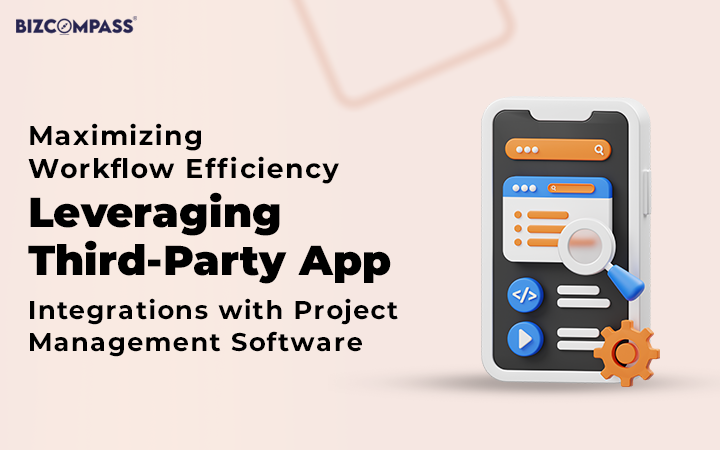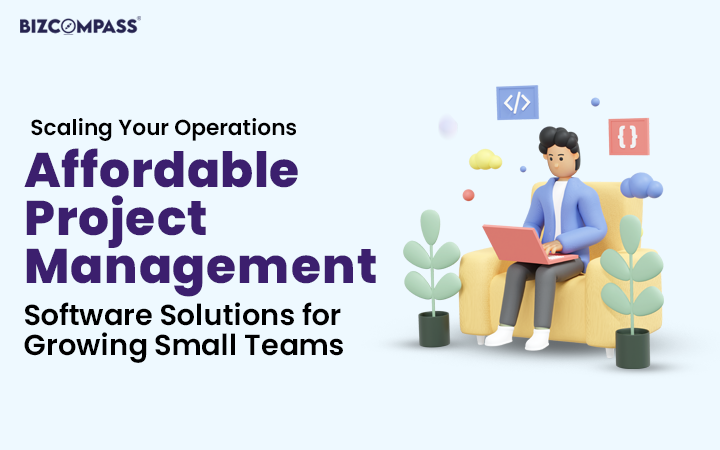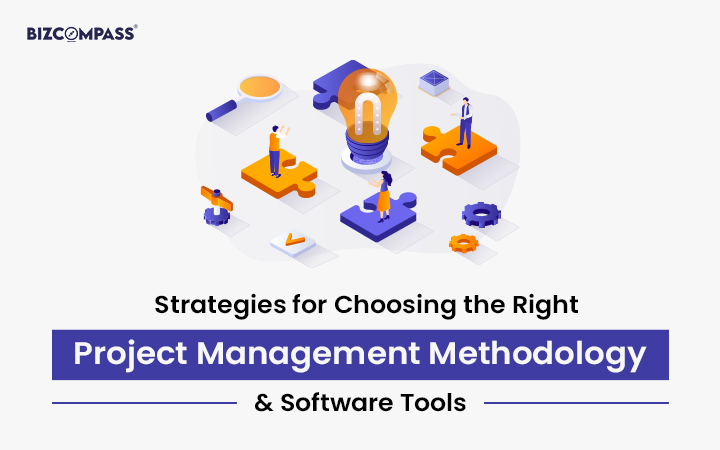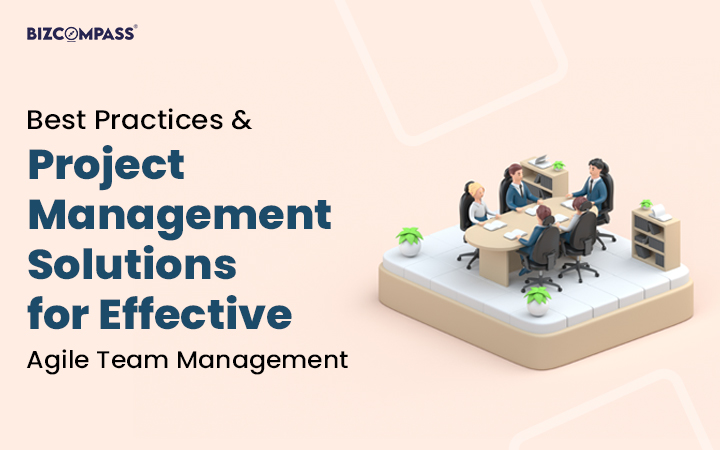Content
- Introduction
- Importance Of Integrations For Enhancing Efficiency In Project Management
- Types Of Integrations Available For Project Management Software
- Benefits Of Integrating Project Management Software With Third-Party Apps And Tools
- Common Integration Use Cases In Project Management
- Factors To Consider When Choosing Project Management Software Based On Integration Capabilities
- Implementation Strategies For Integrating Project Management Software With Third-Party Apps And Tools
- Best Practices For Utilizing Integrations In Project Management Software
- Future Trends In Project Management Software Integrations
- Final Thoughts
- Faq
Introduction
In the fast-paced world of project management, efficiency is paramount. Project management software has revolutionized the way teams collaborate, plan, and execute tasks.
However, its true potential is unlocked when integrated with a myriad of third-party apps and tools. These integrations bridge gaps and streamline workflows, empowering teams to work smarter, not harder. Whether it's syncing calendars with task lists, sharing files seamlessly, or automating repetitive processes, the possibilities are endless.
By integrating project management software with communication tools like Slack or Microsoft Teams, teams can enhance collaboration by centralizing discussions and updates.
Integration with cloud storage services such as Google Drive or Dropbox ensures easy access to files and documents, eliminating the need for cumbersome email attachments.
Moreover, project management software can integrate with time tracking and invoicing tools, facilitating accurate billing and resource allocation.
This integration not only saves time but also ensures transparency and accountability.
Furthermore, integrating project management software with customer relationship management systems enhances client communication and project visibility, ultimately leading to improved customer satisfaction. Let's discover how the integrations can revolutionize your project management workflow and boost overall efficiency.
Importance Of Integrations For Enhancing Efficiency In Project Management
Integrations play a pivotal role in enhancing efficiency within project management workflows. In today's interconnected digital landscape, teams rely on a multitude of tools and applications to accomplish tasks effectively.
Project management software serves as a central hub for organizing, planning, and monitoring projects. However, its true power is realized when seamlessly integrated with various third-party apps and tools. One of the primary reasons integrations are crucial for efficiency is the elimination of silos. When project management software integrates with other tools, such as communication platforms, file storage systems, or time-tracking applications, it breaks down barriers between different aspects of project work.
This integration ensures that information flows smoothly across the entire project lifecycle, preventing disjointed processes and redundant data entry.
Moreover, integrations automate repetitive tasks, saving valuable time and reducing the risk of errors. For example, syncing calendars between project management software and email platforms ensures that deadlines and milestones are consistently updated without manual intervention. Similarly, integrating with time tracking tools automates the recording of billable hours, streamlining invoicing processes and improving accuracy.
Furthermore, integrations enhance collaboration by providing a unified workspace where team members can access relevant information and communicate seamlessly.
Whether it's sharing files, discussing tasks, or receiving real-time updates, integrated project management systems foster collaboration and foster a more cohesive team environment.
Integrations are essential for maximizing the efficiency of project management processes by streamlining workflows, automating tasks, and fostering collaboration across teams.
Types Of Integrations Available For Project Management Software
In today's interconnected digital ecosystem, project management software serves as a cornerstone for organizing and executing tasks efficiently. However, its true potential is unleashed when seamlessly integrated with various third-party applications and tools. These integrations bridge gaps, streamline workflows and enhance collaboration across teams.
01 Communication Tools
Communication is at the heart of successful project management. Integrating project management software with communication platforms like Slack or Microsoft Teams facilitates real-time collaboration, centralizes discussions, and ensures that team members stay informed and engaged. Users can receive notifications, share updates, and discuss tasks without switching between multiple applications, thereby streamlining communication processes and improving overall efficiency.
02 File Storage And Sharing
Efficient file management is essential for project success. Integrating project management software with file storage and sharing services such as Google Drive or Dropbox enables seamless access to project-related documents, images, and files.
This integration eliminates the need for manual file uploads and ensures that team members always have access to the latest versions of documents.
Additionally, it promotes collaboration by allowing users to share files directly from within the project management interface, reducing friction and improving productivity.
03 Time Tracking And Productivity Tools
Tracking time and productivity is crucial for monitoring project progress and resource allocation. Integrating project management software with time tracking tools like Toggl or Harvest automates the recording of billable hours, task durations, and productivity metrics.
This integration provides real-time insights into project timelines, budget utilization, and resource efficiency, empowering project managers to make data-driven decisions and optimize workflows accordingly.
04 Customer Relationship Management Software
Effective customer relationship management is essential for projects involving client interaction. Integrating project management software with CRM platforms such as Salesforce or HubSpot facilitates seamless communication, enhances client visibility, and streamlines project delivery.
This integration enables project teams to access client information, track communication history, and align project activities with customer requirements, ultimately improving client satisfaction and fostering long-term relationships.
05 Development And Coding Tools
For software development projects, integrating project management software with development and coding tools is essential for managing code repositories, tracking issues, and coordinating development efforts. Platforms like GitHub or Bitbucket can be seamlessly integrated with project management software to streamline development workflows, facilitate code reviews, and ensure version control. This integration fosters collaboration between developers, testers, and project managers, leading to faster delivery of high-quality software products.
06 Accounting And Finance Software
Managing project finances and accounting processes is critical for project success. Integrating project management software with accounting and finance software such as QuickBooks or Xero enables seamless invoicing, expense tracking, and financial reporting.
This integration automates billing processes, synchronizes financial data across systems, and ensures accurate budget management throughout the project lifecycle.
By integrating project management with accounting software, organizations can improve financial transparency, streamline invoicing cycles, and optimize cash flow management.
07 Marketing Automation Platforms
For marketing projects, integrating project management software with marketing automation platforms like Mailchimp or Marketo is essential for coordinating marketing campaigns, tracking leads, and measuring campaign performance.
This integration enables seamless communication between marketing teams, aligns marketing activities with project goals, and provides real-time insights into campaign effectiveness.
By integrating project management with marketing automation, organizations can optimize marketing workflows, improve campaign ROI, and drive business growth.
The integration of project management software with third-party applications and tools is essential for enhancing collaboration, streamlining workflows, and maximizing efficiency.
Benefits Of Integrating Project Management Software With Third-Party Apps And Tools
Integrating project management software with third-party apps and tools offers a plethora of benefits that enhance collaboration, streamline workflows, and improve overall project efficiency.
01 Improved Collaboration
Integrating project management software with communication tools like Slack or Microsoft Teams fosters real-time collaboration among team members.
By centralizing discussions, sharing updates, and facilitating instant communication, these integrations ensure that all stakeholders are aligned and informed, leading to faster decision-making and smoother project execution.
02 Streamlined Workflows
Integrations automate repetitive tasks and streamline workflows by eliminating manual data entry and reducing the need for switching between multiple applications.
For example, integrating project management software with file storage and sharing services such as Google Drive or Dropbox enables seamless access to project-related documents, streamlining document management and enhancing productivity.
03 Enhanced Productivity
Time tracking and productivity tool integrations like Toggl or Harvest automate the recording of billable hours, task durations, and productivity metrics.
This integration provides valuable insights into resource utilization, project progress, and team performance, empowering project managers to identify bottlenecks, optimize workflows, and allocate resources more effectively, ultimately leading to improved productivity.
04 Increased Transparency
Integrating project management software with customer relationship management platforms like Salesforce or HubSpot enhances transparency by providing a unified view of project and client-related information.
This integration enables project teams to access client data, track communication history, and align project activities with customer requirements, improving client satisfaction and fostering stronger client relationships.
05 Better Decision-Making
Access to real-time data and insights from integrated third-party tools enables better decision-making at every stage of the project lifecycle.
Integrating project management software with accounting and finance software like QuickBooks or Xero provides project managers with accurate financial data, enabling them to make informed decisions regarding budget allocation, resource planning, and project prioritization.
06 Scalability And Flexibility
Integrations with a wide range of third-party apps and tools allow organizations to tailor their project management workflows to suit their specific needs and requirements.
Whether it's integrating with development and coding tools for software projects or marketing automation platforms for marketing campaigns, these integrations offer scalability and flexibility, enabling organizations to adapt to changing project demands and business environments.
07 Cost Savings
Integrating project management software with third-party apps and tools can lead to cost savings by reducing manual effort, minimizing errors, and improving efficiency.
For example, automating billing processes through integration with accounting software can save time and reduce administrative overhead, while streamlining communication through integration with communication tools can minimize misunderstandings and delays, ultimately leading to cost savings across the organization.
08 Competitive Advantage
Organizations that leverage integrations to enhance their project management processes gain a competitive advantage by delivering projects more efficiently, meeting customer expectations, and staying ahead of the competition.
By optimizing collaboration, streamlining workflows, and improving productivity, these organizations can deliver projects faster, with higher quality results, and ultimately achieve tremendous success in the marketplace.
Common Integration Use Cases In Project Management
01 Automatically Syncing Tasks With Calendar Apps
This integration ensures that project tasks, deadlines, and milestones are synchronized with calendar applications such as Google Calendar or Outlook.
Team members can view project-related events alongside their other commitments, helping them manage their time effectively and stay organized.
02 Uploading Files From Cloud Storage Platforms
Integrating project management software with cloud storage platforms like Google Drive or Dropbox allows for seamless file sharing and collaboration.
Team members can upload project-related files directly from cloud storage, ensuring that everyone has access to the latest documents, designs, and resources.
03 Tracking Time Spent On Tasks
Time-tracking integrations enable team members to log hours spent on individual tasks or projects directly within the project management software.
This integration provides accurate insights into resource utilization, helps monitor project progress, and facilitates billing and invoicing processes.
04 Creating And Updating Tasks Based On CRM Interactions
Integrating project management software with CRM systems such as Salesforce or HubSpot enables the automatic creation or updating of tasks based on customer interactions or sales activities. This ensures that project teams are aligned with customer requirements and can deliver personalized solutions effectively.
05 Streamlining Development Workflows
Integration with coding and version control tools like GitHub or Bitbucket streamlines development workflows by providing seamless access to code repositories, issue tracking, and version control within the project management environment.
This fosters collaboration between developers, testers, and project managers, leading to faster development cycles and higher-quality software products.
06 Generating Reports And Insights
Integrating project management software with analytics and reporting tools such as Tableau or Power BI enables the generation of comprehensive reports and insights.
Project managers can track key performance indicators, monitor project health, and identify areas for improvement, empowering data-driven decision-making and enhancing outcomes.
Factors To Consider When Choosing Project Management Software Based On Integration Capabilities
01 Compatibility With Existing Tools And Systems
Ensure that the software is compatible with your organization's existing tools and systems, including communication platforms, file storage solutions, and other essential applications.
02 Availability Of Pre-Built Integrations Vs. Custom Integration Options
Evaluate whether the software offers pre-built integrations with commonly used third-party apps and tools. Additionally, assess the availability of custom integration options to tailor the software to your specific needs and workflows.
03 Ease Of Setting Up And Managing Integrations
Consider the ease of setting up and managing integrations within the project management software. Look for solutions that offer intuitive integration processes and user-friendly interfaces to streamline configuration and maintenance tasks.
Implementation Strategies For Integrating Project Management Software With Third-Party Apps And Tools
Implementing integrations between project management software and third-party apps and tools requires careful planning to ensure seamless functionality and maximum efficiency.
01 Identify Integration Needs
Start by identifying the specific needs and requirements for integrating project management software with third-party apps and tools. Determine which integrations are essential for improving workflows, enhancing collaboration, and achieving project goals.
02 Research Available Integrations
Research the available integrations supported by the chosen project management software. Explore pre-built integrations and compatibility with popular third-party apps and tools relevant to your organization's workflow.
03 Evaluate Customization Options
Assess whether the project management software offers customization options for creating custom integrations tailored to your organization's unique requirements. Evaluate the feasibility and cost-effectiveness of custom integration development if necessary.
04 Plan Integration Workflow
Develop a detailed plan for integrating third-party apps and tools with the project management software. Define the integration workflow, including data synchronization processes, automation rules, and user permissions.
05 Test Integrations
Before deploying integrations in a production environment, thoroughly test each integration to ensure compatibility, reliability, and functionality. Conduct integration testing to identify and resolve any issues or inconsistencies.
06 Train Users
Provide training and support to users on how to use integrated features and workflows effectively. Ensure that team members understand how integrations work, how to access integrated tools, and how to troubleshoot common integration issues.
07 Monitor Performance
Continuously monitor the performance of integrations to identify any issues or bottlenecks. Monitor data synchronization, automation processes, and system performance to ensure smooth operation and optimal efficiency.
08 Iterate And Improve
Gather feedback from users and stakeholders on the effectiveness of integrations and identify areas for improvement. Iterate on integration workflows, configuration settings, and user interfaces to optimize performance and usability over time.
Best Practices For Utilizing Integrations In Project Management Software
Utilizing integrations effectively in project management software requires adherence to best practices to optimize workflow efficiency and maintain data integrity.
01 Maximizing Efficiency By Automating Repetitive Tasks
Identify repetitive tasks that can be automated through integrations and configure workflows accordingly. Automate processes such as task creation, file sharing, and notifications to streamline operations and save time.
02 Ensuring Data Consistency Across Integrated Tools
Maintain data consistency across integrated tools by defining clear data mapping rules and synchronization processes. Ensure that information shared between project management software and other tools remains accurate, up-to-date, and consistent to avoid errors.
03 Regularly Reviewing And Updating Integrations As Needed
Periodically review integrated workflows and configurations to assess their effectiveness and relevance to evolving business needs. Update integrations as necessary to incorporate new features, address issues, or accommodate changes in tool functionality.
04 Monitoring Integration Performance And Reliability
Monitor the performance and reliability of integrations on an ongoing basis to identify any issues or bottlenecks. Keep track of data synchronization, automation processes, and system uptime to ensure smooth operation and timely resolution of any integration-related issues.
Future Trends In Project Management Software Integrations
Future trends in project management software integrations are poised to revolutionize the way teams collaborate, manage projects, and leverage technology.
01 Integration With Emerging Technologies
Project management software will increasingly integrate with emerging technologies such as Artificial Intelligence (AI) and the Internet of Things (IoT). AI-powered analytics can provide insights into project performance and predictive capabilities for risk management. IoT devices can collect real-time data from project sites, enabling better monitoring and decision-making.
02 Expansion Of Integration Options
Integration options will expand to include industry-specific tools and platforms tailored to the unique needs of different sectors. This could consist of specialized software for industries like construction, healthcare, or manufacturing, allowing for seamless collaboration and data exchange across the entire project ecosystem.
03 Enhanced Security Measures
As data sharing between integrated systems becomes more prevalent, there will be a greater emphasis on enhancing security measures to protect sensitive information.
This may involve implementing encryption protocols, multi-factor authentication, and other advanced security features to safeguard data integrity and privacy.
04 Integration With Remote Work Tools
With the rise of remote work, project management software will integrate more seamlessly with remote work tools such as video conferencing platforms, virtual collaboration tools, and remote desktop solutions. This integration will support distributed teams by providing centralized communication channels and access to project resources from anywhere.
05 Integration With Project Management Standards And Frameworks
Project management software will integrate with established project management standards and frameworks such as PMBOK (Project Management Body of Knowledge) and PRINCE2 (Projects IN Controlled Environments).
This integration will help ensure adherence to industry best practices, streamline project planning and execution, and facilitate compliance with regulatory requirements.
Final Thoughts
As project management software continues to integrate with a diverse range of technologies, the potential for improving collaboration, efficiency, and project outcomes is limitless.
By embracing emerging trends, enhancing security measures, and catering to the evolving needs of remote and diverse teams, organizations can unlock new levels of productivity and innovation. With careful planning, implementation, and ongoing optimization, project management software integrations will play a pivotal role in shaping the future of project management and driving success in projects of all sizes and complexities.
If you are looking for project management software that takes care of your business comprehensively, check out Bizcompass today. It is the ideal platform to enhance efficiency.


 >
>






